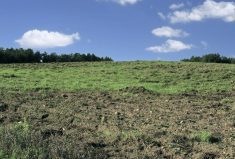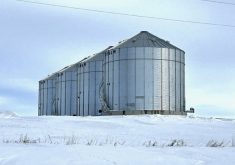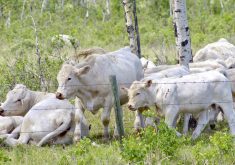Manitoba’s modest four per cent increase in farmland values in 2019 coincided with a mixed year for farmers.
Cereal and canola yields were generally average, with lower yields for soybeans, corn and sunflowers, the Farm Credit Canada (FCC) report says.
A lot of potatoes didn’t get harvested due to wet weather, some crops went unharvested, while hay, pasture and feed corn were hurt during the growing season by dry conditions.
“Manitoba farmland values were also influenced by established producers who were expanding their operations, next-generation farmers entering the market and landlords selling land to their renters,” the report says.
Read Also

Manitoba Ag Days 2026: Local businesses gear up for Brandon farm show
Most of agriculture is seemingly at Manitoba Ag Days each January: Manitoba agribusinesses and farm groups look forward to connecting with farmers at the 2026 show.
Eastman region had the highest average farmland value increase in the province at 8.2 per cent, despite adverse weather conditions during seeding, the growing season and harvest, the FCC report says.
“Land purchases by next-generation producers from those exiting the industry accounted for many transactions, while those renting out farmland were selling to tenants.”
The Central Plains-Pembina Valley region had an average farmland value increase of 4.7 per cent, similar to the four per cent increase in 2018, the report says.
The region was affected by delayed seeding, periods of dry weather followed by wet conditions in September that delayed harvest in some areas.
Parkland region experienced an average increase in farmland values of 3.9 per cent, compared to 3.2 per cent in 2018, the report says.
Rest of Canada
Farmland in Prince Edward Island and New Brunswick had the highest average increase in values at 22.6 and 17.2 per cent, respectively.
Ontario, Quebec and Saskatchewan had average increases slightly above the national average of 5.2 per cent at 6.7, 6.4 and 6.2 per cent, respectively.
British Columbia, Alberta and Nova Scotia had average increases of four, 3.3 and 1.2 per cent, respectively.
For the fourth consecutive year, there weren’t enough of publicly reported transactions in Newfoundland and Labrador to fully assess farmland values, FCC said in a news release April 6.
“Increases in farmland values reported across the country are as wide and varied as the factors that may have influenced them,” the release says. “Average farmland values have increased every year since 1993, however, increases were more pronounced from 2011 to 2015 in many regions.
In Manitoba average land values jumped 22.9, 19.7, 28.5 and 18.7 per cent in 2011, 2012, 2013, and 2014, respectively.
















